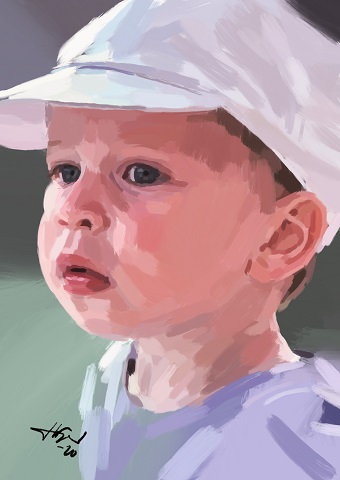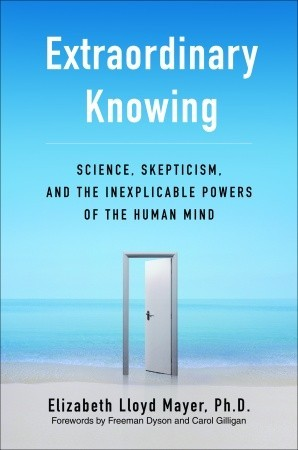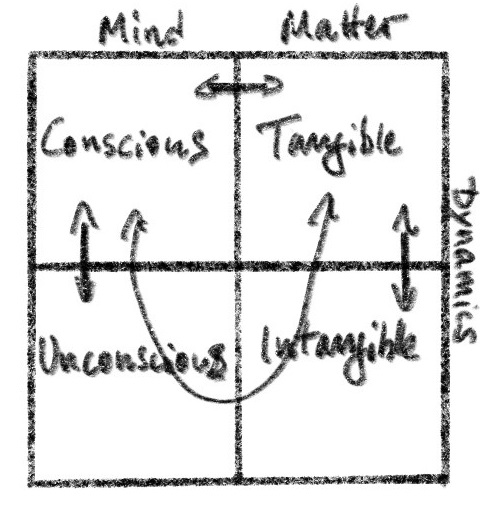This is a summary of my reading and painting last week (week 27, 2020).
Painting
I painted this portrait of my son Eric.

Reading
Books

I read Extraordinary Knowing: Science, Skepticism and the Inexplicable Powers of the Human Mind by Elizabeth Lloyd Mayer. Extraordinary Knowing is an exploration of what science has to say about “inexplicable” phenomena. Elizabeth Lloyd Mayer introduces a Modular Model of Mind/Matter Manifestations (M5) in Chapter 12, Quantum Uncertainty: A Working Model of Reality.

(Source: Elizabeth Lloyd Mayer, Extraordinary Knowing, p. 249.)
The world of the mind is to the left of the vertical axis, and the world of matter is to the right. The world we observe is above the horizontal axis. The quandrants below have a role in what manifests above.
What’s key to this model is that we tend to hold certain rules inviolable in our ordinary thinking, rules that simply don’t apply in the realms characterized either by unconscious dynamics or intangible physical ones.
–Elizabeth Lloyd Mayer, Extraordinary Knowing
The unconscious/intangible dynamics partake of a (non-)logic which is ungraspable by ordinary logic. Space and time don’t play by ordinary rules. Impossible connections become possible.
Articles
I read the following articles:
- Nature Unfolding: An Interview with Christopher Alexander by Katy Butler.
- Making the Garden by Christopher Alexander
As professor of architecture, Christopher Alexander made his first full-blown pattern language in the 1960s. See A Pattern Language: Towns, Buildings, Construction. First, Christopher Alexander was of the opinion that if you just embed these patterns in a building, then most would come out right. Later, he realized that although buildings corresponded to the patterns, there was something fairly drastically wrong.
If people think something ought to be a certain shape…instead of doing what the unfolding tells them to do, they will royally screw it up.
–Christoper Alexander, Nature Unfolding
Christopher Alexander used to ask himself, “To what extend am I alive right now?” This led him to a new view of experiment that uses the human being as a measuring instrument.
When questions about the subjective are asked carefully, and in the right way, they are as reliable as the experiments of physics.
–Christopher Alexander, Making the Garden
It is our active effort to make things beautiful, that brings life to them.
Related posts:
Analysis of pattern languages
Patterns related to work